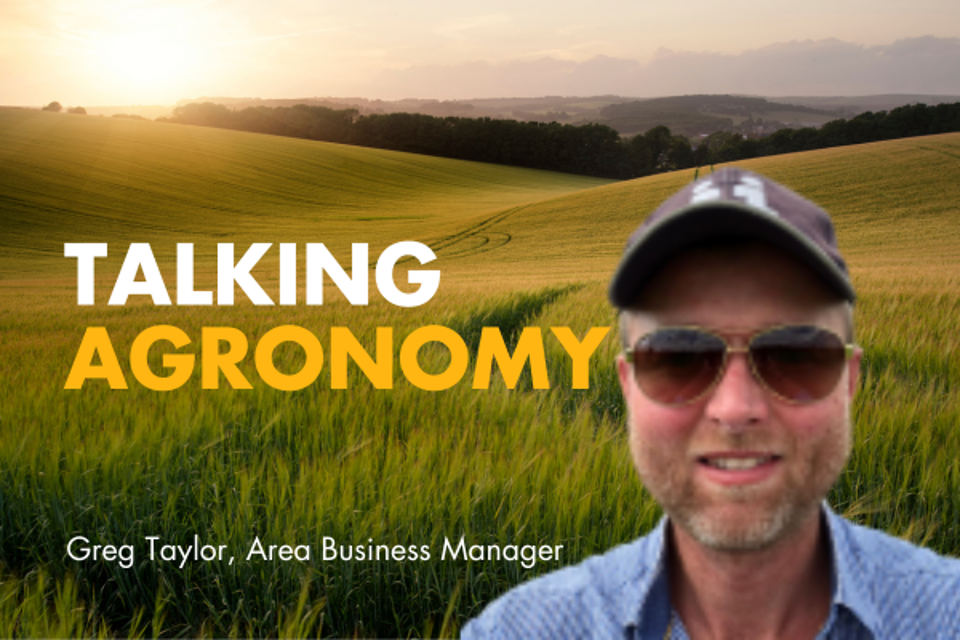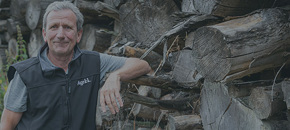
Talking Agronomy | Greg Taylor - October 2021
Blog - 04.10.21
How Best to Establish Oilseed Rape
Dare I say it, cabbage stem flea beetle has taught us a lot about how best to establish oilseed rape.
Once again, early August sowing has worked a treat, with crops direct-drilled into long winter barley stubbles with a companion and seedbed fertiliser staying nicely ahead of any beetle grazing.
It's mid-September and we have yet to see any huge pest populations. But, even planted with companions, those crops we couldn’t get in early enough have definitely been suffering from the beetle. Insufficient time and dull, overcast conditions haven’t enabled either the later-sowings or their companions to grow away well enough. Another lesson learned.
Our catch crops ahead of winter cereals have also suffered from later-than-ideal sowing with the delayed harvest, and lack of sun. Unlike cover crops ahead of spring sowing which have plenty of time to catch-up and do their job, they don’t look like being nearly as effective as we would like. Having said that, of course, where the ground is already in reasonable condition they should be much easier to drill directly into!
Drilling Winter Cereals
On then to our most single most important task of the year – winter cereal drilling – and our concerted effort to get wheat sowing back to the ‘sensible’ late-September/early-October slot.
We know that sowing in the next few weeks rather than later means;
- Better ground conditions,
- More thermal time to develop ahead of winter,
- Lower seed rates,
- Greater tillering,
- Reduced rust risks and
- More competitive as well as more productive crops.
In the absence of serious grassweed problems, we find this adds up to at least an extra 1t/ha of yield and £150/ha of margin. Also, to much lower risks from the sort of weather uncertainty that has become the norm.
That’s why getting on top of black-grass has never been an end in itself for us. Instead, our main aim has always been to profit from getting on top of it by being able to bring wheat sowing back to its best timing.
It has taken years of hard work, but I’m happy to say our determined approach is bearing fruit on a number of historically bad black-grass farms. Last season earlier sowing was the only thing that enabled many of them to grow wheat at all, and their crops performed very well. So, by the time you read this most of their wheat should again be in the ground.
Utilising breaks and covers
As well as delaying wheat drilling, our main tools in getting to this position have been growing double spring breaks in combination with winter covers, and maintaining robust pre-planting, pre-em and post-em herbicide regimes. Also important (though so hard to do) has been biting the bullet and spraying-off or whole-cropping badly-infested fields to enforce a zero seed return policy.
Most of our earlier-sown wheats are going in after two cleaning crops. Our preferred sequence here is spring oats followed by spring linseed. As well as its soil structuring value, lack of trash and slugs make linseed ideal for the direct cereal drilling that always works better earlier in the autumn and wakes-up the least number of grassweeds.
We are also drilling a good amount of ground relatively early with the hybrid barley and rye we find particularly good at dealing with less well-structured soils and especially competitive with weeds. Then it will be back into our spring crop cleaning cycle for the best early wheat entry in 2022 or 2023.
Getting back to sensible September sowing wherever possible is not without its challenges. But, with delayed drilling causing us so many agronomic challenges, we feel it is an essential step in improving the sustainability of our cropping.
The least sustainable – and very last thing – we will ever do, though, is rush into earlier drilling without having done the grassweed control ‘hard yards’.
That’s like expecting our three quarters to shine when our forwards are on the back foot.
Join Our Community

Agrii X
We love engaging with clients and partners. Give us a follow and let's share stories for the community.

Agrii Instagram
A picture paints a thousand words. Follow us on Instagram to see what we are up to.

Agrii Facebook
Follow us on the worlds biggest social media site for the latest news and events straight to your feed.

Agrii LinkedIn
If you are all about the business, connect with us on LinkedIn to build your network
Stay In Touch

Newsletter Sign-Up
Receive email updates on topical news and information from around Agrii and UK Farming.

Listen To Our Podcasts
Listen to the Tramlines Podcast. Fortnightly chat about agriculture and trials with your host Tony Smith.

Agrii Insights
Read essential agri intelligence for profitable farming.

Find an Event
Join us for our upcoming events and tours.



